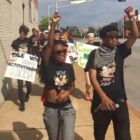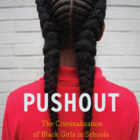
Imprisoned as Teens, Speaking Out as Free Men for Change in Juvenile System
|
Incarceration can be difficult for mature adults, but it can be irreversibly traumatic for adolescents.
Juvenile Justice Information Exchange (https://jjie.org/page/159/)

In late September, Torri was driving down the highway with her 11-year-old son Junior in the back seat when her phone started ringing.
It was the Hamilton County Sheriff’s deputy who worked at Junior’s middle school in Chattanooga, Tennessee. Deputy Arthur Richardson asked Torri where she was. She told him she was on the way to a family birthday dinner at LongHorn Steakhouse.
“He said, ‘Is Junior with you?’” Torri recalled.
Earlier that day, Junior had been accused by other students of making a threat against the school. When Torri had come to pick him up, she’d spoken with Richardson and with administrators, who’d told her he was allowed to return to class the next day. The principal had said she would carry out an investigation then. ProPublica and WPLN are using a nickname for Junior and not including Torri’s last name at the family’s request, to prevent him from being identifiable.
When Richardson called her in the car, Torri immediately felt uneasy. He didn’t say much before hanging up, and she thought about turning around to go home. But she kept driving. When they walked into the restaurant, Torri watched as Junior happily greeted his family.
Soon her phone rang again. It was the deputy. He said he was outside in the strip mall’s parking lot and needed to talk to Junior. Torri called Junior’s stepdad, Kevin Boyer, for extra support, putting him on speaker as she went outside to talk to Richardson. She left Junior with the family, wanting to protect her son for as long as she could ...

Incarceration can be difficult for mature adults, but it can be irreversibly traumatic for adolescents.

SchoolsNotPrisons, an 11-stop music and arts tour focused on both increasing spending for education and breaking the school-to-prison pipeline in California, wraps up in Stockton, California, on Friday.

The data seem to indicate that youth who are exposed to violence across multiple settings are likely to have few, if any, locations in which they feel safe from violence. Aggressive and violent conduct for these youth may be a manifestation of their trauma.
Understanding the extent of ETV and how violence affects these youth is necessary to target the appropriate population with the appropriate level of care.
One more state court has decided that the equivalent of a life sentence without the possibility of parole is unconstitutional for juvenile offenders.

The next presidential administration should build on the momentum researchers, advocates and policymakers have created to close youth prisons, experts say.

Lawful but awful. This is the phrase that is now commonly used to describe the deadly shootings committed by the police against people of color.

Activists concerned about disciplinary policies that force students out of school and into the justice system will gather in cities across the country this week to make their case for reform.

“Though media and advocacy efforts have largely focused on the extreme and intolerable abuse cases involving Black boys,” begins Monique W. Morris in the introduction to her recently published book, “a growing number of cases involving Black girls have surfaced to reveal what many of us have known for centuries: Black girls are also directly impacted by criminalizing policies and practices that render them vulnerable to abuse, exploitation, dehumanization, and, under the worst circumstances, death.”